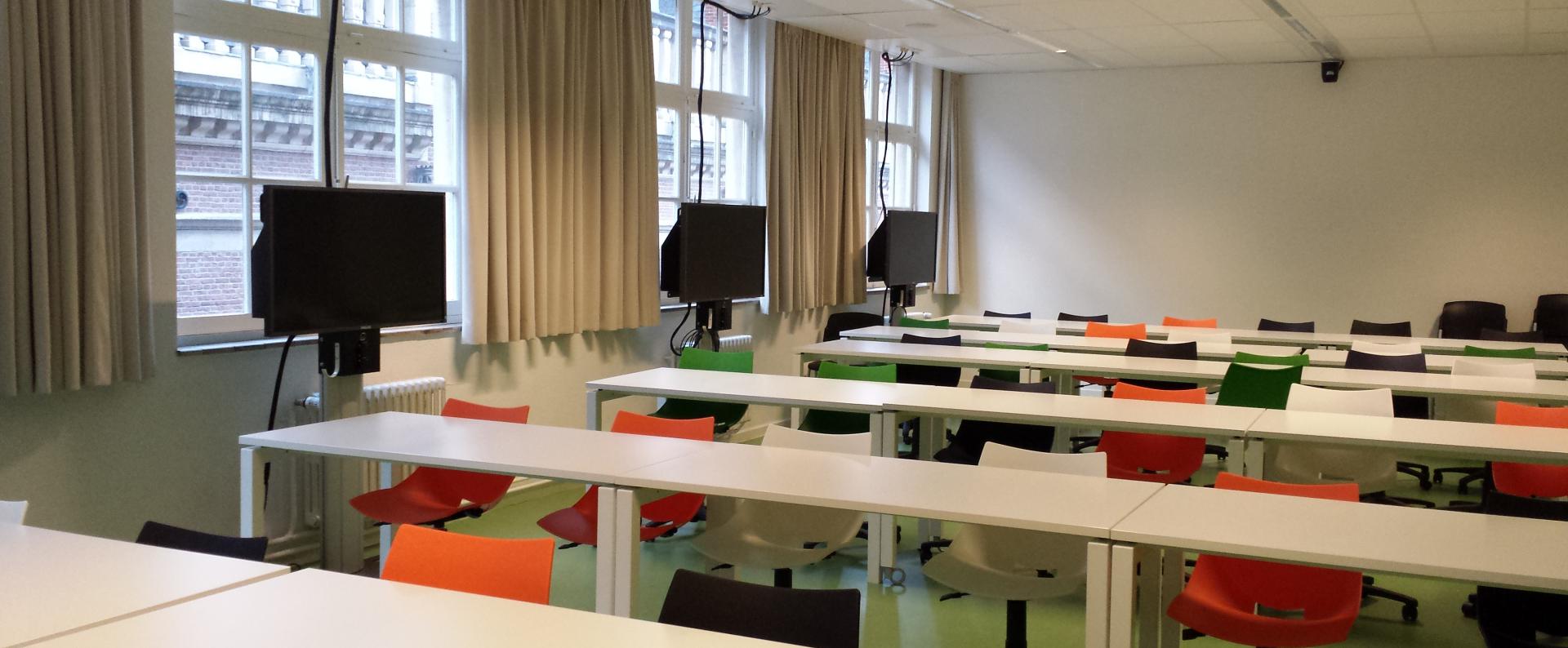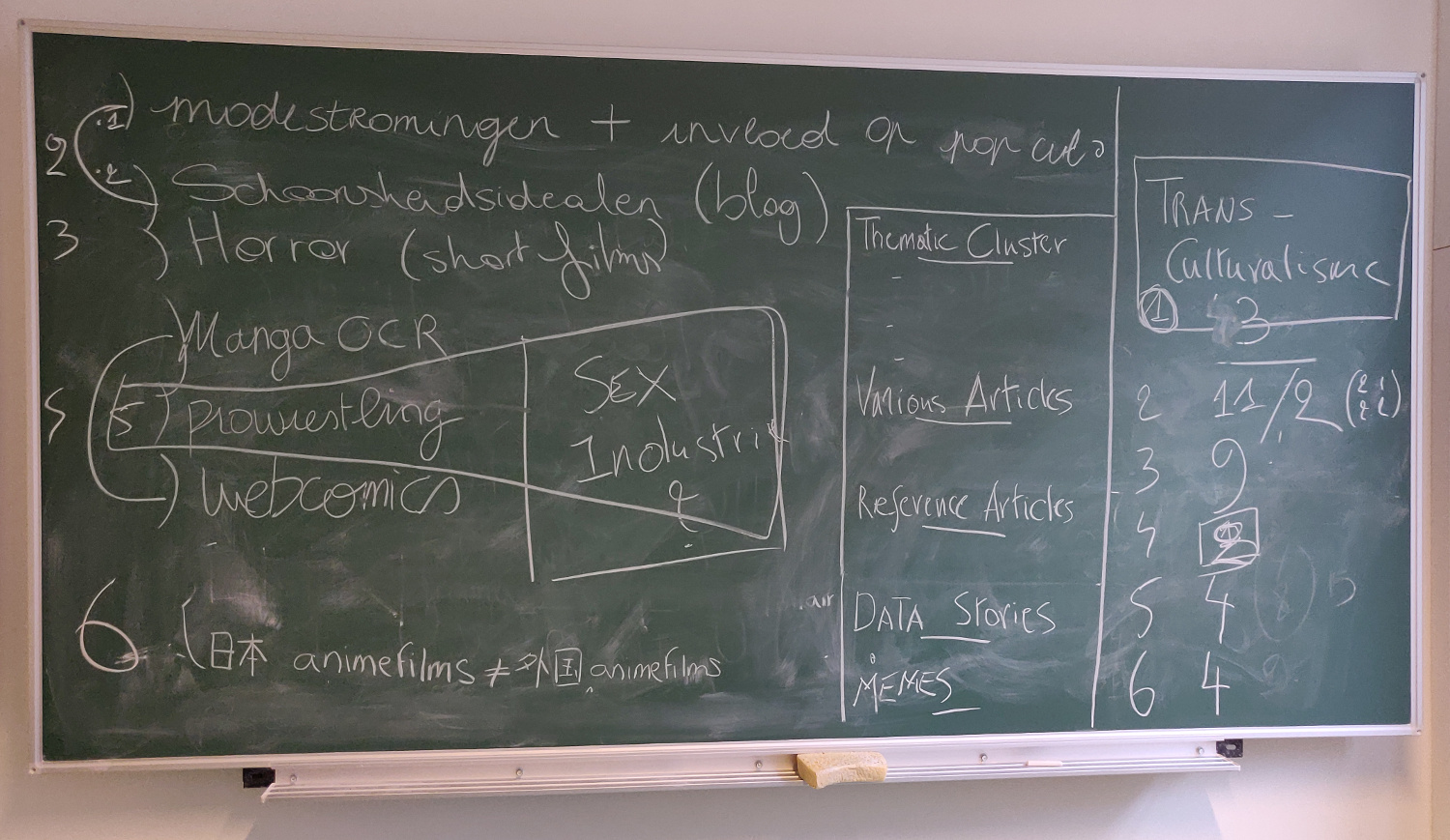"Working with popular culture" is a BA level course in the KU Leuven Japanese Studies program.
The course ran for the first time the second semester of the academic year 2018-19 and builds partly on practices developed over the years in Methodology and Digital Literacies in Japanese Studies. For a number of basic IT-skills it relies on L-Data Processing, another recent newcomer in the curriculum.
The Course
 collaborative working space MSI
collaborative working space MSI
Objectives
The main course goals:
- Assess the state of academic research on Japanese popular culture anno 2020.
- Acquire better insight into and learn to deal critically with content from popular culture.
- Learn to use non-academic sources about Japanese popular culture as primary sources for research.
- Introduce the DH toolkit. Learn to apply specific analysis methods, process and visualize these analyses.
- Say something meaningful about Japan on the basis of data from popular culture.
Context
Enthusiasm
Many students1 entering the Japanese Studies KU Leuven program do so because of a keen interest in Japanese popular culture. Moreover, not few of them come from an arts or technical background and expect to do and make things with content from that Japanese popular culture. That expectance sometimes collides with classical academic practice.
We've been trying to ease the impact of that collision the past years by, among other things, highligthing the importance of digital Literacies in the curriculum but felt that we could do better to accomodate and guide this enthusiasm for Japan's popular culture. Which is a first reason for setting up this course.
The idea is to, first, look at what is being done academically with (the media of) Japanese popular culture. Secondly, if forums, social media and fan-texts of all sorts aren't directly academically/scientifically sound formats, what about using that content as primary sources, as raw data?
Which brings us to tools.
Tools
Digital Humanities is a buzzword, for its many meanings I will refer you to your favourite search engine. But fact is that we experience a bit of a dilemma. On the one hand we do not produce a lot of DH-related bachelor and master papers. Which is due to a lack of insight in what kind of questions DH-driven research actually asks and due to a lack of experience with the DH toolkit. On the other hand is the introduction of this toolkit, and especially mastering it, a time-consuming undertaking for which the curriculum does not appear to have space available. Which is the second reason for setting up this course.
A separate page lists up the tools and reference materials introduced and used during the thirteen weeks of this course. Important to mention is that it is not our intention to have every student work with every piece of software but we do require that:
- every student should know off the different types of the tools and when to use them
- special attention should be given to using the tools with Japanese text (parsing text is an obvious example)
Balance
Every new course needs two or even three runs to fall into its fold. This one isn't an exception. It is and will be for some time an exercise in balance, the balance between
- 'making' time and taking-in time (reading and listening/taking notes)
- quantitative and qualitative research methods
- assignment requirements and available time (ideally 2/3 of class-time is used for actual working on the assignments)
- progress in IT-skills and insight in DH
Visual Japan (2019 - 20)
The Corona edition: the first five weeks were similar to the 2018 sessions, the rest of the semester consisted of weekly online meetings per group, the gradual development of the group projects and individual assignments.
In contrast to the first edition the seven group projects did not have a central theme. But almost all of the projects worked around a visual medium, hence 'Visual Japan'.
Requirements for each project:
- pick one popular culture medium (as defined earlier)
- a quantitative as well as a qualitative research angle
The Magazine (2018 - 19)
 brainstorm result
brainstorm result
After considerable group-brainstorming it was decided that the output of this year's 'working with popular culture' would be a group effort in the form of a web magazine. A group effort on two levels: a separate group for every medium, the whole student group in function of one thematic cluster.
With as only conditions that every text produced by students
- needed to have a qualitative as well as a quantitative research approach,
- should deal with a specific medium and
- somehow should orbit around a central theme -- Cultural Globalisation
-
About 40 to 50%, over the last 8 years. ↩